Decoding Scoring for the Predictive Index Assessment
- Cognitive Assessment Scoring
- Behavioral Assessment Scoring
- Reviews
Navigating the Predictive Index Assessment can be daunting. While many talk about the complex test structure and its tendency to confuse candidates, most forget that the scoring system can be just as confusing. To understand it they must first understand various scores and sub-scores, interlinked in ways that can seem overwhelming to some candidates.
This is why we have dedicated this page to demystifying the scoring process for the PI Assessment from A to Z. Ensuring that candidates can not only approach the test with confidence but also comprehend their performance after looking at a score report.
How does scoring for the Predictive Index work?
Understanding the scoring system starts with recognizing that the Cognitive and Behavioral assessments use different methodologies. The PICA (Predictive Index Cognitive Assessment) predicts future job performance through the rate of learning new information, while the PIBA (Predictive Index Behavioral Assessment) predicts job performance in terms of behavioral fit. Each has its unique approach to scoring, reflecting different objectives.
| Cognitive Assessment Report | Behavioral Assessment Report |
|---|---|
| Measure cognitive ability | Assesses behavioral drives |
| Calculates raw and scaled score | Plots unique behavioral patterns on graph |
| Based on questions answered correctly | Assigns a reference profile based on the adjectives selected |
| No negative marking | No negative marking |
| Contains percentile ranking | Does not contain percentile ranking |
However, both assessments are criterion-based, not normative, meaning there is no passing or failing. Candidates are evaluated on their skills and behaviors across various categories. This data is then used to compare them against specific job targets set by the employer, rather than comparing them against other candidates.
With that out of the way, let us explore how each assessment is scored.
PI Cognitive Assessment Scoring
The cognitive assessment gauges how quickly an applicant learns new information and their ability to analyze and interpret complex data. Performance is measured through various scores, with the central measure being the raw score. This score reflects the number of questions (out of 50) a candidate has correctly answered, with the average raw score being 20 correct answers out of 50.
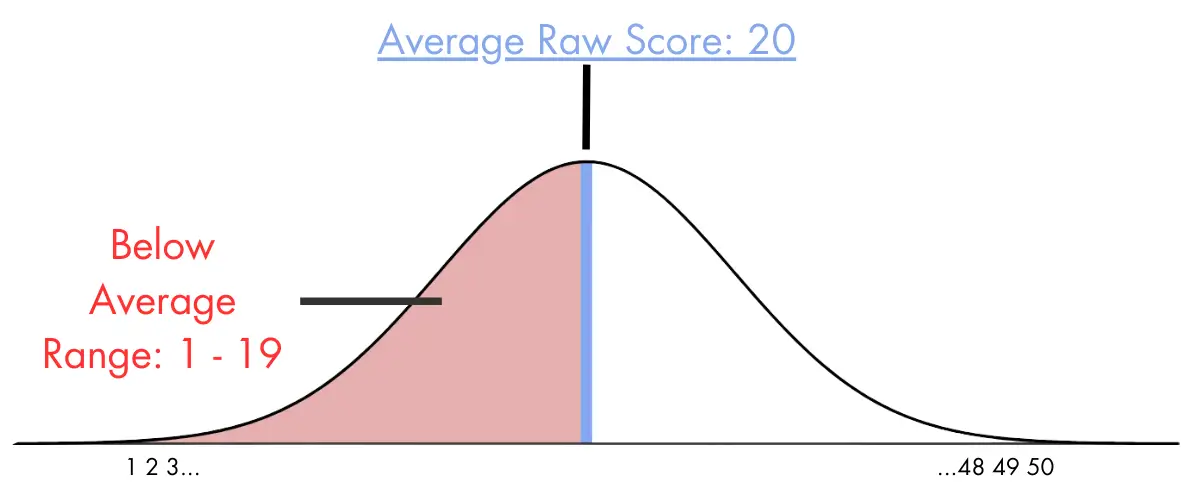
This raw score is then compared against a reference group of 288,000 previous test takers to calculate their scaled score, ranging from 100 to 450. The scaled score is the most important metric on the report since a candidate’s performance or suitability for a given job role is based on their scaled score, not the raw score.
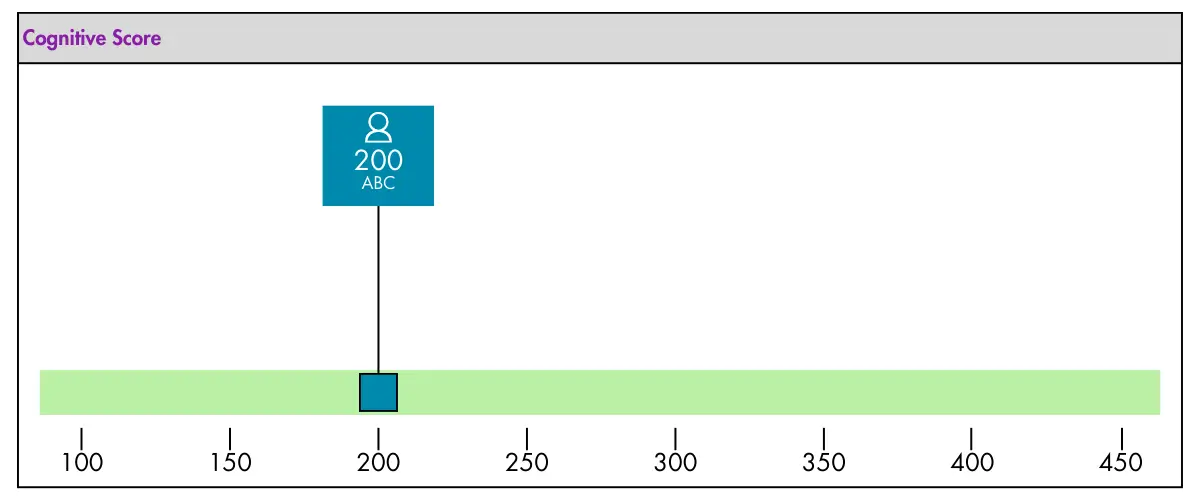
This is because raw scores are not always comparable between candidates, depending on different revisions of the test or if they received extended time. Scaled scores solve this problem by being a percentile rank of the raw CA scores. The average scaled score is 250.
All of this brings us to the final metric used for cognitive assessment scoring – the match score. The CA match score is based on the distance between a scaled score and the cognitive job target. For example, if the scaled score matches or exceeds the target score, then the match score is a ten. But if it falls below the target, then the match score decreases on a sliding scale.

What is displayed on a Cognitive Score Report?
- Assessment Taker-facing Report: This report is generated for the candidate taking the assessment. It is far less detailed than the administrator-facing report, only showing the scaled score and percentile rank of the candidate.
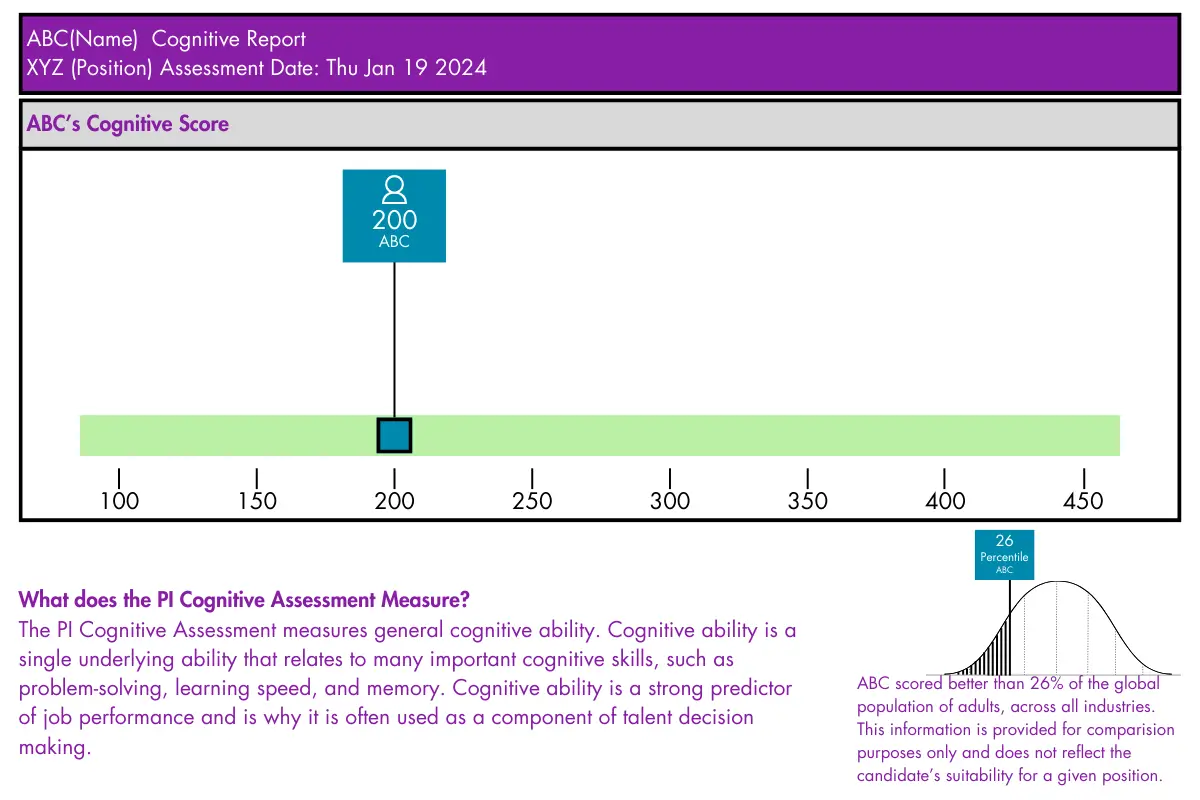
- Administrator-facing Report: This is the report received by the administrator of the test. Here they can see a candidate’s scaled score plotted against the target score set for the job role. This is followed by their match score and percentile rank.
- The report also contains various sub-scores at the bottom. These include a candidate’s overall raw score depicted as ‘questions answered correctly/questions attempted’, as well as their individual raw scores in verbal, numerical, and abstract reasoning.
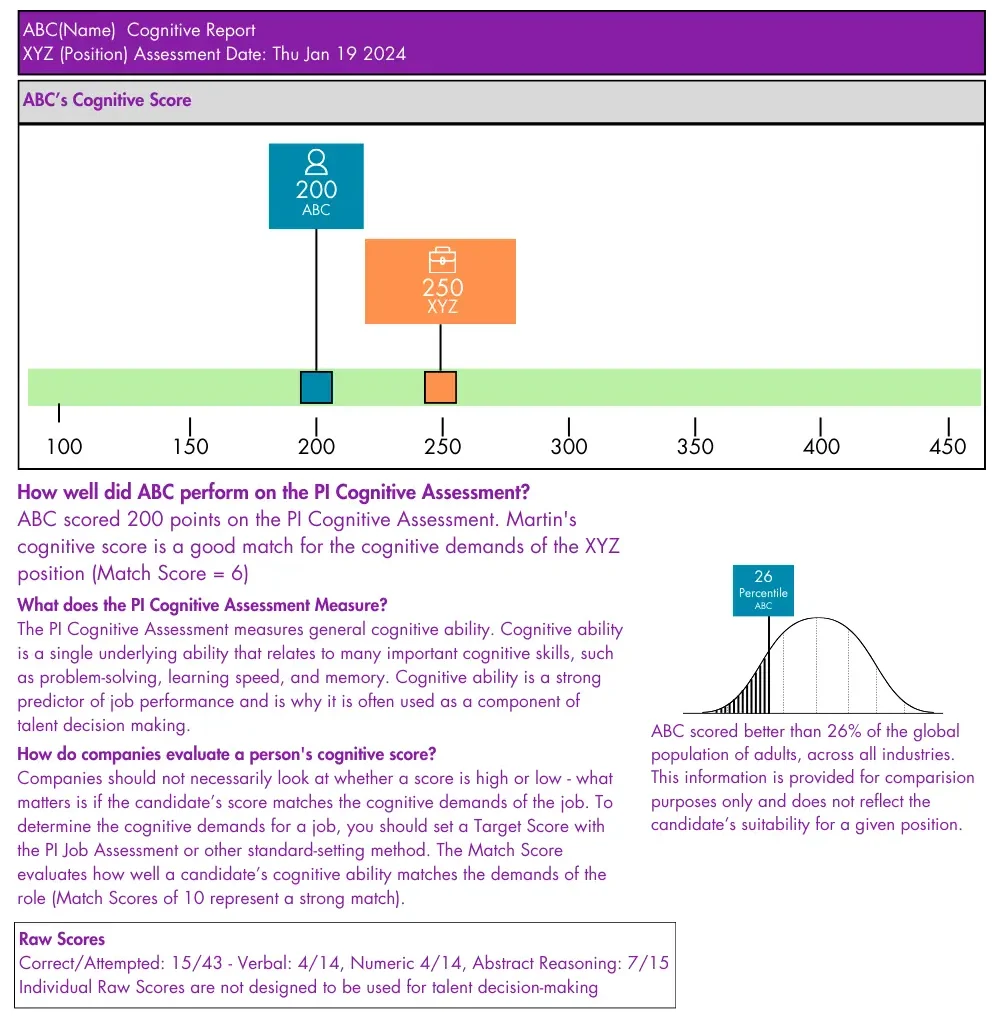
PI Behavioral Assessment Scoring
When we talk about the behavioral assessment of the Predictive Index it comprises two identical lists of 86 adjectives. These are carefully designed to gauge the influence of motivating needs, or “drives,” that significantly impact workplace behaviors. This is an untimed, free association test, which means there is no particular right or wrong answer.
In the first list, known as the Self-Concept List, candidates select adjectives they believe represent how others expect them to behave. This reflects their perception of how they should present themselves, including aspects like self-confidence and self-discipline.
The second list, the Self List, prompts candidates to choose adjectives that truly describe themselves, revealing how they perceive themselves in nearly any situation.
The adjectives are related to 5 behavioral drives: Dominance, Extraversion, Patience, Formality, and Objectivity (also known as A, B, C, D, and E Drives, respectively). Among these drives, Dominance, Extraversion, Patience, and Formality serve as the primary factors that influence an individual’s preferred workplace behavioral tendencies. Meanwhile, Objectivity serves as a secondary factor that characterizes a participant’s decision-making style in relation to the four primary factors.
On the basis of adjectives selected by the candidate, a reference profile is assigned defining the characteristics of the person.
What is displayed on a Behavioral Report?
- Graphical Representation: Each drive will be converted into a unique behavioral pattern and plotted on a graph.
- Score Depiction: The scores plotted on the graphs are of three types: For Self, Self-Concept, and Synthesis, which is the average of the two, and in this factor E would come, which is how objective you are in decision making. Apart from these factors, you will also see an M score, that is the number of questions answered or the number of adjectives that are selected for self and self-concept. In synthesis, the M score is the total of the M score of self and self-concept.
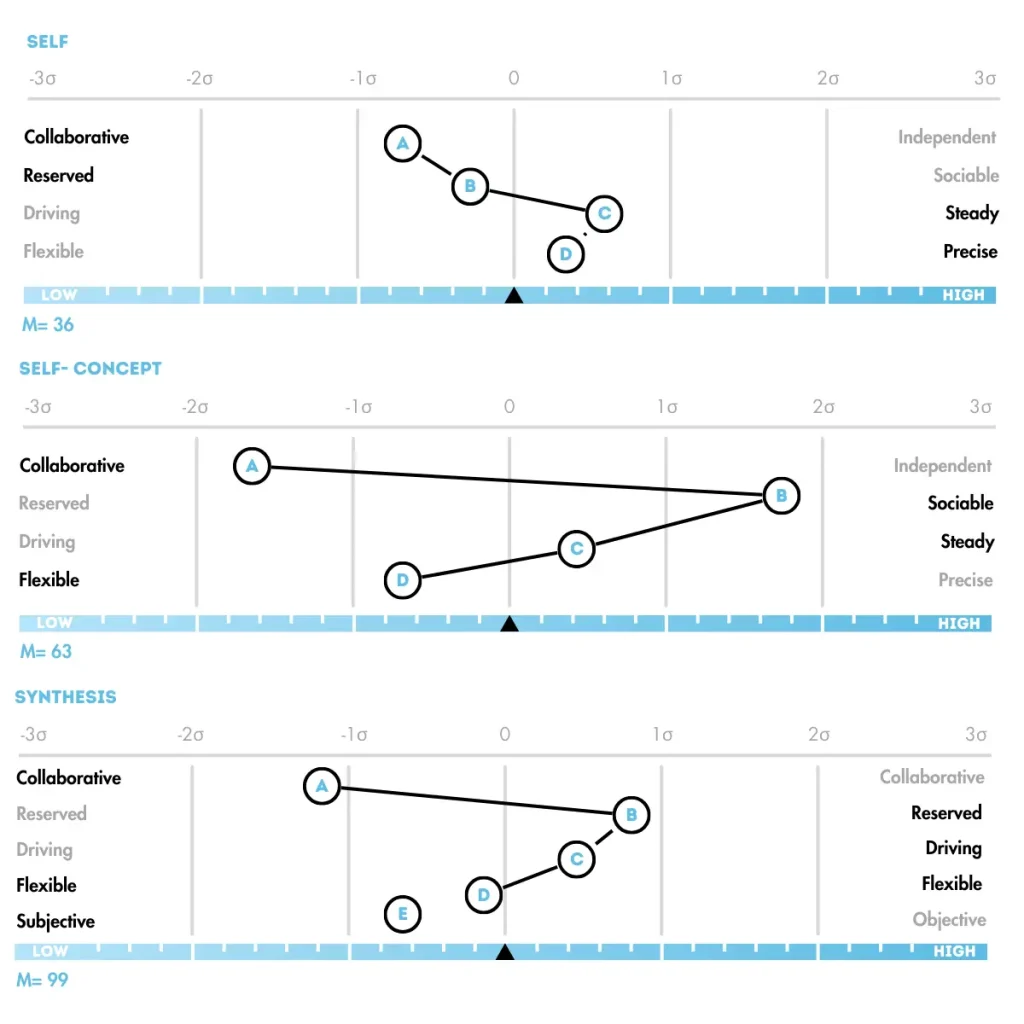
- Strengths: An expanded section on the strengths of the candidate will be included in the reports both to help the candidate and recruiter understand where the candidate would shine.
- Summary: The report includes a summary of who you are, expanding on the characteristics. Another section includes a summary of your management style for both people and projects.
- Management strategies: This section of the report elaborates on what strategies the manager and team can use to get the best out of you.
For in-depth information on scoring for the Predictive Index test, consider checking out our Predictive Index Assessment Course. It offers the most comprehensive coverage of this widely used assessment. Our detailed guides, customized learning resources, and tailor-made practice tests turn this grueling challenge into a launch pad for your career.

Created by: Michael Lerner
BSc, Psychometric Tutor, Prepterminal Test Expert
764 students, 4.8, 168 Reviews
Hey, I’m Michael, PrepTerminal’s Predictive Index expert. I am here to help you with any questions or concerns you may have about the PI Test. Feel free to contact me at [email protected].